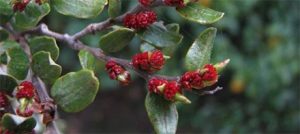New Zealand’s forests are having a lull in seeding after last year’s mega mast, which will lead to fewer predators in some areas. Beech and some other forest trees seed every two to six years in what is known as a mast. Source: Timberbiz
NZ’s Department of Conservation uses climate modelling to predict forest masts a year ahead, then monitors the following summer to check if seed is present.
Recent seed sampling results confirm there is no significant Beech forest mast this year, as forecast, says DOC Principal Science Advisor, Graeme Elliott.
“We finished seed sampling in March before the CoViD-19 lockdown and results show there is little or no Beech seed across the South Island and only a moderate mast at several North Island sites,” he said.
DOC’s latest modelling using climate data from the past two summers also indicates there will be no major Beech mast in 2021.
“After the massive Beech and Rimu mast last year, our forests are conserving resources and taking a break from widespread seeding. This means we’re likely to see fewer rats and stoats in many areas and can refocus our predator control plans accordingly,” Mr Elliott said.
DOC’s seed sampling involved snipping branches by helicopter from Beech and Rimu trees at selected sites throughout the country.
More than 1100 Beech trees and 600 Rimu trees were sampled at 46 sites.
Only sites in the Kaimanawa and Kaweka forest parks showed moderate seeds present.
Beech masts appear to be triggered by a significant temperature increase between consecutive summers.
Modelling predicts seeding is unlikely in most of New Zealand’s beech forests in 2021 except in the northern tip of the South Island and north of Lake Wakatipu in Otago where some seeding is possible.






